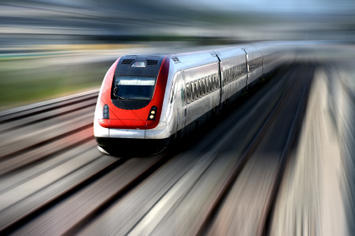
When voters passed in the November 2008 election, Prop 1A, they approved partially funding a 800 mile High Speed Rail project, that was to run from San Francisco to San Diego. The project was to be constructed quickly and be up and running by 2020.
Approved Business plans in 2012 and 2014, then projected construction to start from the Central Valley, near Fresno, and proceeding south through the Tehachapi Mountains to Los Angeles Union Station.
Now we see the High Speed Rail Authority is promoting a draft 2016 Business plan that abandons building south and instead promotes building north from near Bakersfield, but only to San Jose. The reason for this dramatic shift is lack of funding to complete the previously proposed segment to Southern California.
The Authority claims they have the funding to complete an Initial Operating Segment (IOS), which would run from about 20 miles north of Bakersfield to San Jose Diridon Station. From Diridon Station, riders could use Caltrain to proceed further north to other destinations. The IOS segment is expected to be completed and usable around 2025.
The projected funding for this IOS, would come from Prop 1A bonds, Cap and Trade projected pay as you go revenues as well as bonded revenues (thru 2050), and Federal funds that have been already allocated. Constructing this segment would consume all currently available funds.
The key foundation for promoting this new plan, is that ridership will be greatly enhanced with commuters using this High Speed Rail section to commute from the Central Valley to Silicon Valley. The Authority and others are promoting this projection as a major improvement to the jobs / housing imbalance that currently prevails in Silicon Valley. The claim is cheap housing in Fresno or Bakersfield will induce workers from Silicon Valley to buy or rent in the Central Valley. They promote a quite reasonable trip time of only 40 minutes on the train, making such a commute attractive.
But further scrutiny belies these assertions. The trip time on HSR will indeed be around 40 minutes, but that takes the commuter only to San Jose Diridon Station. Diridon station is not where these commuters will work. Indeed they will have to then transfer to another service at least once to get to their employers. Analysis of the true trip time doubles the real commute time to around 80 minutes. This was amplified by Palo Alto Mayor, Pat Burt at the recent Local Policy Makers group meeting March 24th.
The premise that workers will be enticed to move to the Central Valley because the cost of housing is much lower also needs examination. Here one has to consider in this equation, the cost of commuting.
HSR transportation is a premium service. By law the HSR trains must operate without a subsidy, a restriction which BART or Caltrain do not have to meet. The projected HSR fare from Fresno or Bakersfield is $68 each way. For a daily commuter that is $136 per day, or about $34000 per year to pay for the HSR train ride. This does not include other charges like parking or transportation from Diridon to a final working destination.
Also working against the myth that the bottom line is cheaper for a commuter to live in the Central Valley, yet work in Silicon Valley, is the treatment of expenses on ones tax return. Home mortgage interest is a tax deductible expense on ones tax return. Commuting train fares, are not a tax deductible item on a tax return.
All and all it just doesn’t add up that it is cheaper for a commuter to live in the Central Valley, and take HSR to Silicon Valley. There will be, despite Authority claims otherwise, very few commuters living in the Central Valley and commuting to Silicon Valley.
Finally, residents in Southern California are really being excluded by this new plan. They will be paying in taxes to service the Prop 1A bond service. They will be paying in higher gasoline costs to support Cap and Trade revenues. For Southern California residents, there is no benefit. They are simply being left out.
There is a shortfall in funding to later complete Phase I of the HSR project, that is the corridor from San Francisco to Anaheim; this short fall in funding is over $40 billion. Such funding is nowhere to be found. The un-certainty in even funding this new IOS is huge. View the input from the Legislative Analyst’s report just presented at an oversight hearing on March 28th.
Let’s quit fooling ourselves. Former State Senator Joe Simitian in 2012 had it right when he stated on the Senate floor:
“This is the wrong plan in the wrong place in the wrong time,”.
Now is the right time to stop the project.
This piece first appeared at Fox and Hounds Daily.












